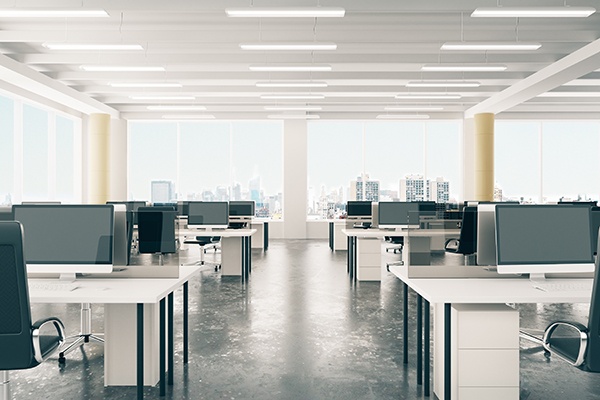
We've blogged a great deal about how the nature of office design is changing. However, just because office space is changing in general doesn't necessarily mean that your specific space needs to follow all of these trends. Noted architecture firm HLW International has come up with a seven factor scale by which you can judge your office design or come up with ideas for a new one.
To apply the scale, consider each of the factors that it contains, where your current space fits on the continuum and where you would like your new space to fit. That list of office design variables will help you to more strategically design your next space.
1. Size
The first step is to put your space on a continuum between large and small. Your 150,000 square foot headquarters might lean towards large while a 2,000 sf district office in Virginia Beach is probably small.
2. Location
Next, gauge your office's on the basis of whether it is located in the middle of its trade area or more on the edge. A Manhattan location is "core," while one in Central New Jersey is more peripheral.
3. Perspective
An office design can be set up to get people to focus inward or to get people to focus outward. A central feature or visually striking amenities in a space's core might cause it to be more inwardly focused while a site that has an ample glass line with arresting views is one that draws focus out.
4. Exposure
Is the site built in a way that lets occupants have a sense of privacy, or is it wide open? When judging an office space or a future design, consider both the extent to which it provides privacy in both the auditory and visual realms.
5. Temporality
This factor judges an office design based on whether or not it is comfortable enough to encourage workers to be there whether or not they need to be.
Six Amenities to Look for in Office Space
6. Enclosure
Consider whether the environs of a space are defined by walls and doors. For instance, co-working spaces are frequently wide open with open work areas, break areas and the like, creating an almost completely unenclosed feel.
7. Technology
Finally, judge your space based on whether or not it includes the latest technology.
Once you have judged your space on the basis of these seven factors, you can use them to both internally understand your needs and externally define them. The idea isn't that you always want an open, high-tech space with inward focus. Instead, it's that by understanding what you need from your office design, you become more likely to come up with a space and with features therein that suit your business goals.
Other articles to check out:
Office Planning Tips for Corporate Tenants
Sense of Purpose and Your Next Office Space
Best 5 Ways to Get the Most Out of Your Office Space
Subscribe to our blog for more great tips!!








